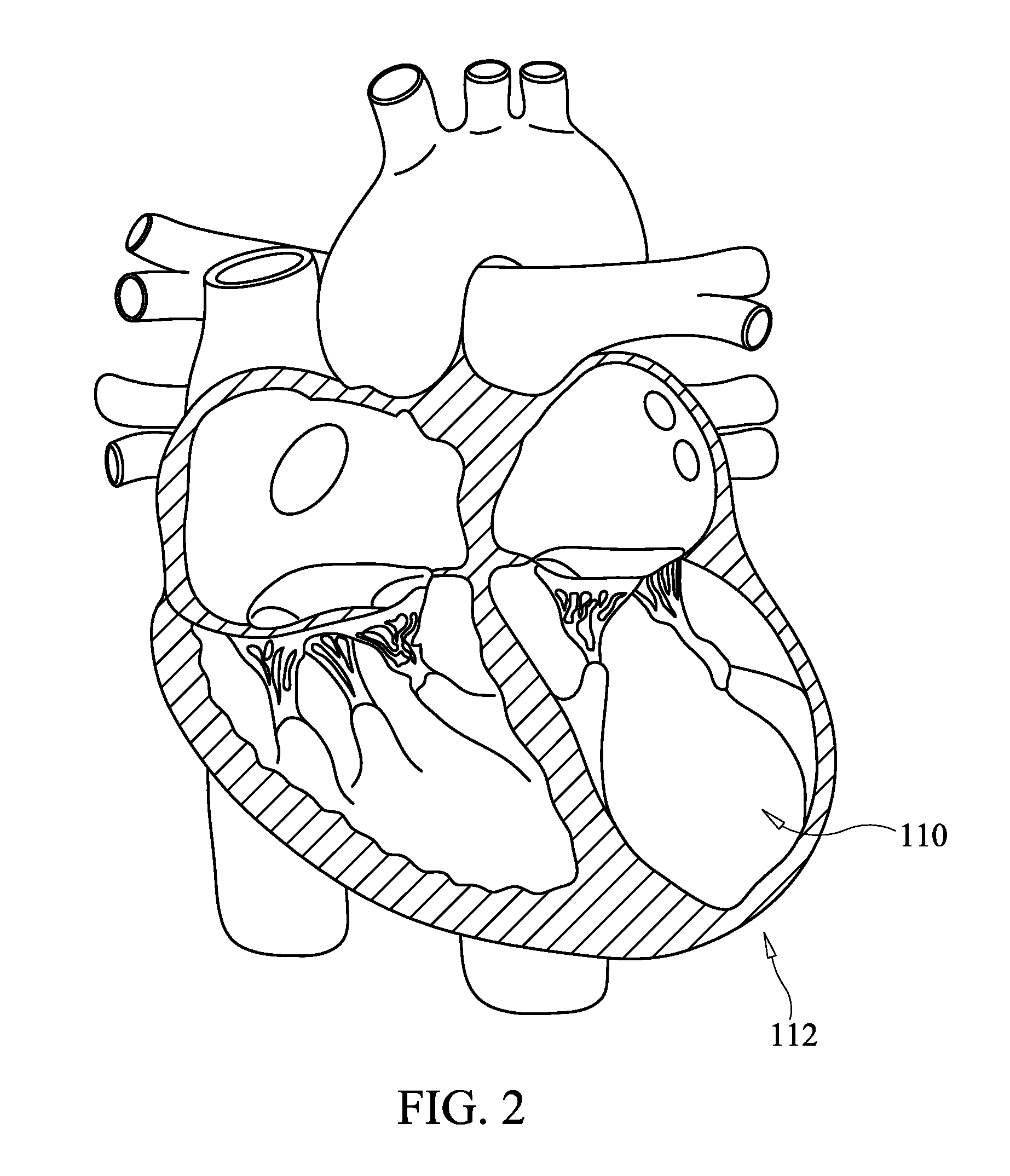Method for percutaneous lateral access to the left ventricle for treatment of mitral insufficiency by papillary muscle alignment
a technology of papillary muscle and lateral access, which is applied in the field of therapeutic changing the geometry of the left ventricle of the human heart, can solve the problems of ventricular tissue damage, dilated left ventricle, and insufficient heart pumping or other heart function abnormalities, so as to improve cardiac function and reduce the volume of the left ventricle
- Summary
- Abstract
- Description
- Claims
- Application Information
AI Technical Summary
Benefits of technology
Problems solved by technology
Method used
Image
Examples
Embodiment Construction
Definitions
[0052]The following definitions are provided as an aid to understanding the detailed description of the present invention.
[0053]“Anchors” for the purposes of this application, is defined to mean any fastener. Thus, anchors may comprise C-shaped or semicircular hooks, curved hooks of other shapes, straight hooks, barbed hooks, clips of any kind, T-tags, or any other suitable fastener(s). In one embodiment, anchors may comprise two tips that curve in opposite directions upon deployment, forming two intersecting semi-circles, circles, ovals, helices or the like. In some embodiments, anchors are self-deforming. By “self-deforming” it is meant that anchors change from a first undeployed shape to a second deployed shape upon release of anchors from restraint in housing. Such self-deforming anchors may change shape as they are released from housing and enter papillary or myocardial tissue, to secure themselves to the tissue. Thus, a crimping device or other similar mechanism is ...
PUM
 Login to View More
Login to View More Abstract
Description
Claims
Application Information
 Login to View More
Login to View More - R&D
- Intellectual Property
- Life Sciences
- Materials
- Tech Scout
- Unparalleled Data Quality
- Higher Quality Content
- 60% Fewer Hallucinations
Browse by: Latest US Patents, China's latest patents, Technical Efficacy Thesaurus, Application Domain, Technology Topic, Popular Technical Reports.
© 2025 PatSnap. All rights reserved.Legal|Privacy policy|Modern Slavery Act Transparency Statement|Sitemap|About US| Contact US: help@patsnap.com



